Opening Plenary, Monday 22 May, 09:00 – 10:30
Room: Grand Amphitheatre- Keynote 1: Theodore Sizer, Creating New Opportunities with the FutureX Network
- Keynote 2: Georges Karam, 4G Wireless Enabling the Internet of Things (IoT)
Tuesday Plenary, Tuesday 23 May, 11:00 – 12:30
Room: Amphitheatre Bleu- Keynote 1: Wen Tong, The Blueprint of 5G - A Global Standard
- Keynote 2: Alain Aspect, From Einstein’s Doubts to Quantum Information: A New Quantum Revolution
Wednesday Plenary, Wednesday 24 May, 11:00 – 12:30
Room: Amphitheatre Bleu- Keynote 1: Serge Willenegger, The On the Path to 5G
- Keynote 2: Giuseppe Caire, Wireless Edge Caching: Promises and Recent Advances
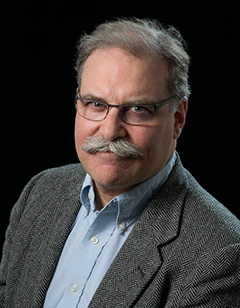 Creating New Opportunities with the FutureX Network
Creating New Opportunities with the FutureX Network
Theodore Sizer
Mobile Radio Research Lab Leader, Nokia Bell LabsDownload slides
Biography: Dr. Theodore (Tod) Sizer is Lab Lead of the Mobile Radio Research Group in Bell Labs. In this role he leads teams in six worldwide locations innovating in all aspects of wireless systems, technology and software. In addition his teams collaborate with fixed access systems including copper and optical with special opportunities being explored at the convergence between these and wireless.
Tod has been leading the vision and research of 5G and the new technologies that will be required to meet the needs of an Always Connected world with expectations of Infinite Capacity. In the past he has had significant impact as a key proponent and inventor of the lightRadio™ and small cell technology and systems leading to Alcatel-Lucent’s product line solution to address the current Wireless Data explosion. During his tenure at Bell Labs he has performed research in Wired and Wireless Home Networking, Fixed Wireless Loop systems, Video Watermarking technologies, Optical Computing and Switching Systems, and High Power Laser Design. He was a member of the technical team in Lucent’s role as a promoter in the Bluetooth Special Interest Group (SIG).
Tod graduated from Amherst College, Magna Cum Laude and received his Masters and Doctorate from the Institute of Optics at the University of Rochester. In 2007 Tod was named a Bell Labs Fellow “For sustained creative contributions to wireless systems, particularly in the convergence of packet and wireless technologies” and in 2012 was named a WWRF Fellow. In 2012 he received the Popular Science Breakthrough Innovation award for the lightRadio invention. A member of the Board of Directors of the Alcatel-Lucent Foundation, he also serves as a member of the VCAT (Visiting Committee on Advanced Technology) which is the principal industry advisory board towards NIST (National Institute of Standards and Technology), part of the US Department of Commerce. He is the author of 52 US patents, over 50 refereed publications and is a member of the IEEE and OSA.
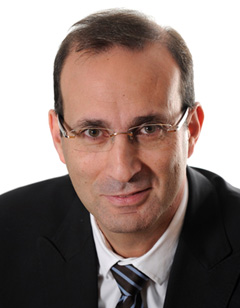 4G Wireless Enabling the Internet of Things (IoT)
4G Wireless Enabling the Internet of Things (IoT)
Georges Karam
Founder, Chairman, and CEO,
Sequans Communications
Download slides
Biography: Dr. Georges Karam Is Founder, President, and Chief Executive Officer of Sequans Communications. Before founding Sequans Communications, Georges Karam was vice president of cable access for Juniper Networks, running the cable engineering and marketing departments and managing the cable sales launch in Europe, Middle-East, and Africa. He joined Juniper Networks when the company acquired Pacific Broadband Communications (PBC), where he was the first executive to join the founding team to act as vice president of engineering and general manager for Europe. Georges has served in a variety of senior management positions at Alcatel, SAGEM and Philips. He is a senior member of IEEE, has authored numerous technical and scientific papers, and holds several patents in digital communications.
He is also the President of the Alliance Française des industries du Numérique (AFNUM), a professional organization belonging to the Fédération des Industries Electriques, Electroniques et de Communication (FIEEC).
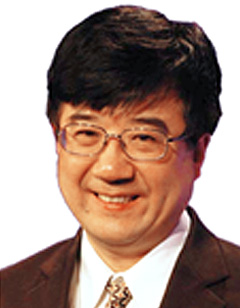 The Blueprint of 5G - A Global Standard
The Blueprint of 5G - A Global Standard
Wen Tong
CTO, Huawei
Fellow, Huawei Technologies
Download slides
Abstract: 5G is now becoming a global movement as a new generation of wireless technologies innovation, the standardization of 5G connectivity technology will have a fundamental impact on our daily life and the future of our society. In this talk, we present the roadmap of the 5G standard, the building block of fundamental technologies, the design principles and latest progress for the radio access network and master network architecture. Some of the technology challenges and advanced research directions will also be discussed.
Biography: Dr. Wen Tong is the Huawei Fellow, Head of Huawei Wireless Research, CTO, Huawei Wireless.
Prior to joining Huawei in March 2009, Dr. Tong was the Nortel Fellow and global head of the Network Technology Labs at Nortel. He joined the Wireless Technology Labs at Bell Northern Research in 1995. He had pioneered fundamental technologies from 1G to 4G wireless with 350 granted US patents.
Since 2010, Dr. Tong is the vice president of Huawei wireless research. In 2011, He was appointed the Head of Communications Technologies Labs of Huawei, currently, he spearhead to lead Huawei’s 5G wireless research and development.
Dr. Tong was elected as a Huawei Fellow and an IEEE Fellow. In 2014, he was the recipient of IEEE Communications Society Industry Innovation Award for “the leadership and contributions in development of 3G and 4G wireless systems”.
Dr. Tong serves as Board of Director of WiFi Alliance and he is the fellow of Canadian Academy of Engineering.
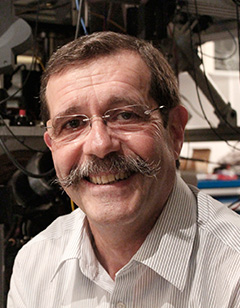 From Einstein’s Doubts to Quantum Information: A New Quantum Revolution
From Einstein’s Doubts to Quantum Information: A New Quantum Revolution
Alain Aspect
Director of Research, CNRS
Professor, Ecole Polytechnique
Download slides
Abstract: In 1935, with co-authors Podolsky and Rosen, Einstein discovered a weird quantum situation, in which particles in a pair are so strongly correlated that Schrödinger called them “entangled”. By analyzing that situation, Einstein concluded that the quantum formalism is incomplete. Niels Bohr immediately opposed that conclusion, and the debate lasted until the death of these two giants of physics. In 1964, John Bell discovered that it is possible to settle the debate experimentally, by testing the now celebrated "Bell's inequalities", and to show directly that the revolutionary concept of entanglement is indeed a reality. A long series of experiments, started in 1972, yielded more and more precise results, in situations closer and closer to the ideal theoretical scheme. After explaining the debate and describing some experiments, we will show in this talk how this conceptual discussion has prompted the emergence of the new field of quantum information and quantum technologies.
He is a member of several science academies in France, USA, Austria, Belgium, UK. Among many awards, he has received the CNRS Gold medal (2005), the Wolf Prize in Physics (2010), the Balzan prize on quantum information (2013), the Niels Bohr Gold medal (2013), the Albert Einstein medal (2013), the Ives medal of the Optical society of America (2013).
Alain Aspect research has bore on tests of Bell's inequalities with entangled photon (PhD, 1974-1983), wave-particle duality for single photons (1984-86); laser cooling of atoms with lasers below the one photon recoil (1985-1992, with Claude Cohen-Tannoudji); ultra-cold atoms, quantum gases, and quantum simulators (1992- , in the Atom Optics group he has established at Institut d'Optique).
More details on: http://www.lcf.institutoptique.fr/Alain-Aspect-homepage
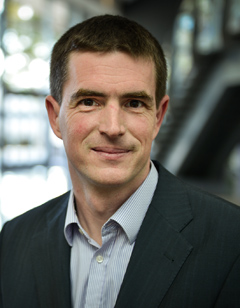 The On the Path to 5G
The On the Path to 5G
Serge Willenegger
Senior Vice President
Qualcomm Technologies
Abstract: In less than two decades, cellular communication has transformed society and the way people interact with one another; it is well on its way to transform how everything interacts with everything else with profound consequences on most industries, economies and work flows. On the path to 5G, one innovation at a time, the cellular industry will transform everything again… including itself.
Biography: Serge Willenegger is senior vice president of product management for Qualcomm Technologies, Inc. where he is responsible for Qualcomm’s core Snapdragon modem business, product portfolio and related modem technology product roadmap supporting cellular enabled products across other QCT business units.
Serge began his career with Qualcomm as an engineering intern in 1995, initially working on IS-95 system evolution. During his tenure, he has held various technology leadership and product management roles in CR&D, QSIO/3GPP, Europe business development and QCT. Serge's contribution was instrumental in establishing and expanding Qualcomm's technology, standardization and product leadership in UMTS and LTE.
Serge holds a Master in Telecommunication Sciences from the Swiss Federal Institute of Technology in Lausanne, Switzerland.
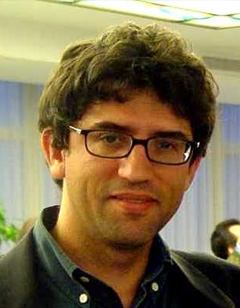 Wireless Edge Caching: Promises and Recent Advances
Wireless Edge Caching: Promises and Recent Advances
Giuseppe Caire
Professor,
Technical University of Berlin
Abstract: Spatial reuse is by far the greatest capacity booster in wireless networks. Historically, making cells smaller and smaller and bringing infrastructure nodes closer and closer to the users allowed to achieve orders of magnitude increase of the wireless capacity (bit/s/km^2) throughout 4 (almost 5) generations of cellular systems. On the other hand, densification of the infrastructure incurs practical limitations due to the cost of deploying and operating the backhaul network to support infrastructure nodes (small cell base stations, remote radio heads, etc..). In the past few years, Edge Caching has emerged as a viable solution to provide scalable per-user throughput at potentially competitive costs. Edge Caching consists of disseminating predictable popular content for capacity-guzzling applications (notably, video streaming) throughout the network nodes (both infrastructure ''helpers'' and users devices), such that most traffic remains local and reachable in one or a few nearest-neighbor hops. Devices on-board memory is a cheap and yet substantially untapped network resource.
Caching into network devices can eliminate the backhaul requirement and yet allow for very high spatial reuse. In particular, for certain relevant network models it has been formally proven that Edge Caching can ''turn memory into bandwidth'', providing a per-user throughput that grows linearly with the on-board memory, and it does not decrease with the number of users. A large amount of theoretical ground-breaking work dedicated to Edge Caching has been published in the information theoretic and communication theoretic literature in the past few years. Specifically, the cached content plays the role of ''side information'' in order to enable advanced PHY techniques, such as distributed multiuser MIMO and interference mitigation.
This overview talk provides a review of the most exciting theoretical results on Edge Caching and of its interplay with advanced PHY schemes in wireless, and advocates Edge Caching as a key technology that should be enabled in 5G networks, in order to achieve unprecedented area capacity at competitive costs.
Biography: Giuseppe Caire was born in Torino, Italy, in 1965. He received the B.Sc. in Electrical Engineering from Politecnico di Torino (Italy), in 1990, the M.Sc. in Electrical Engineering from Princeton University in 1992 and the Ph.D. from Politecnico di Torino in 1994. He has been a post-doctoral research fellow with the European Space Agency (ESTEC, Noordwijk, The Netherlands) in 1994-1995, Assistant Professor in Telecommunications at the Politecnico di Torino, Associate Professor at the University of Parma, Italy, Professor with the Department of Mobile Communications at the Eurecom Institute, Sophia-Antipolis, France, a Professor of Electrical Engineering with the Viterbi School of Engineering, University of Southern California, Los Angeles, and he is currently an Alexander von Humboldt Professor with the Electrical Engineering and Computer Science Department of the Technical University of Berlin, Germany.
He served as Associate Editor for the IEEE Transactions on Communications in 1998-2001 and as Associate Editor for the IEEE Transactions on Information Theory in 2001-2003. He received the Jack Neubauer Best System Paper Award from the IEEE Vehicular Technology Society in 2003, the IEEE Communications Society & Information Theory Society Joint Paper Award in 2004 and in 2011, the Okawa Research Award in 2006, the Alexander von Humboldt Professorship in 2014, and the Vodafone Innovation Prize in 2015. Giuseppe Caire is a Fellow of IEEE since 2005. He has served in the Board of Governors of the IEEE Information Theory Society from 2004 to 2007, and as officer from 2008 to 2013. He was President of the IEEE Information Theory Society in 2011. His main research interests are in the field of communications theory, information theory, channel and source coding with particular focus on wireless communications.